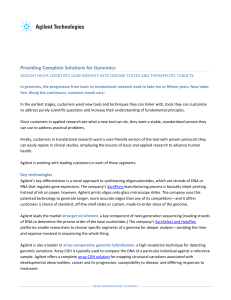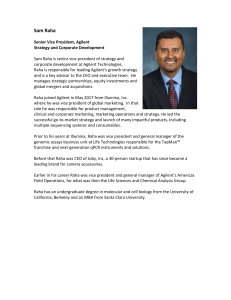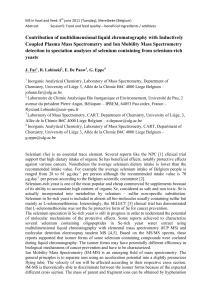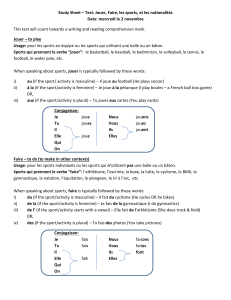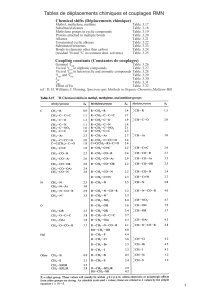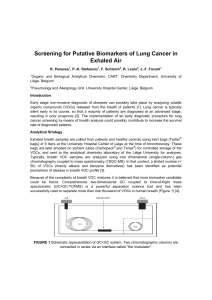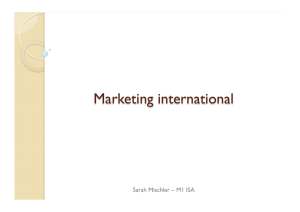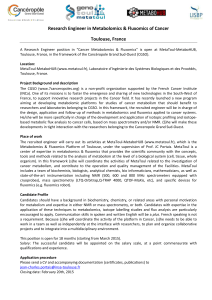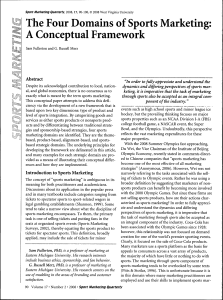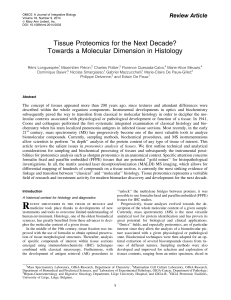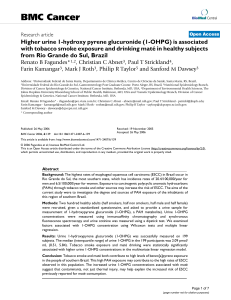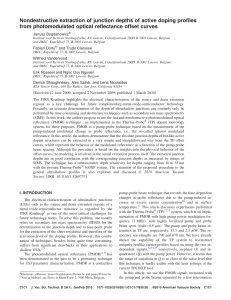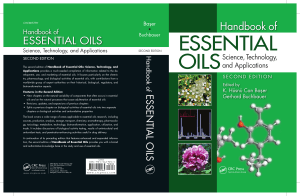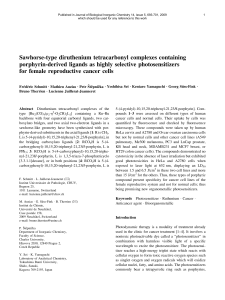Agilent in Sports Drug Testing
publicité
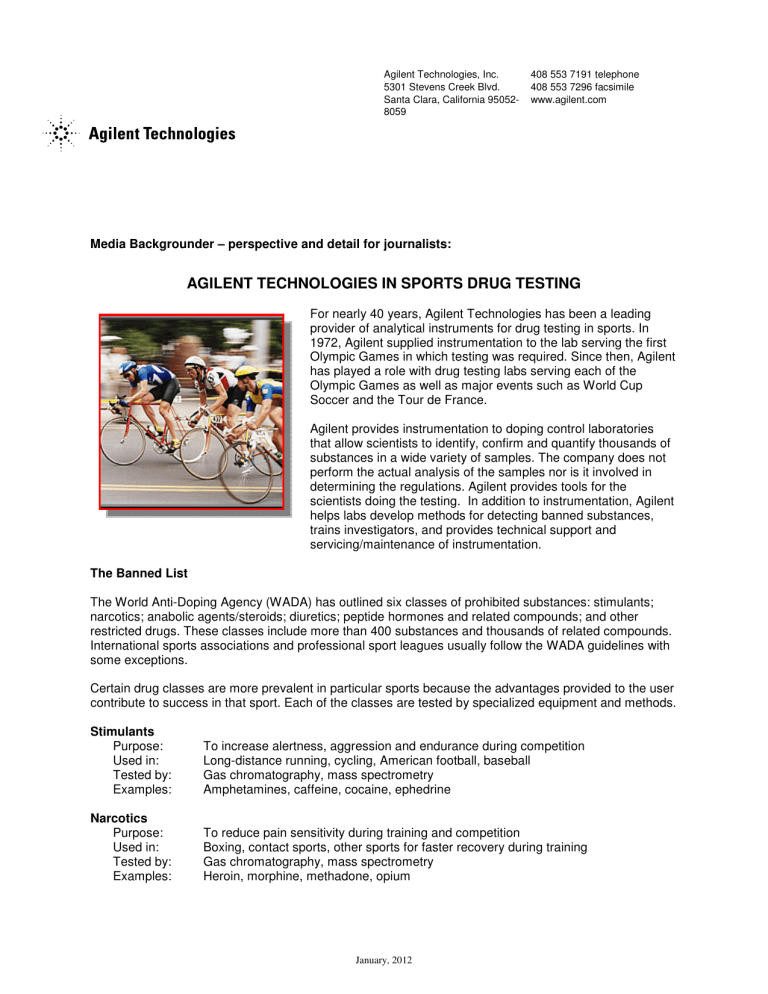
Agilent Technologies, Inc. 5301 Stevens Creek Blvd. Santa Clara, California 950528059 408 553 7191 telephone 408 553 7296 facsimile www.agilent.com Media Backgrounder – perspective and detail for journalists: AGILENT TECHNOLOGIES IN SPORTS DRUG TESTING For nearly 40 years, Agilent Technologies has been a leading provider of analytical instruments for drug testing in sports. In 1972, Agilent supplied instrumentation to the lab serving the first Olympic Games in which testing was required. Since then, Agilent has played a role with drug testing labs serving each of the Olympic Games as well as major events such as World Cup Soccer and the Tour de France. Agilent provides instrumentation to doping control laboratories that allow scientists to identify, confirm and quantify thousands of substances in a wide variety of samples. The company does not perform the actual analysis of the samples nor is it involved in determining the regulations. Agilent provides tools for the scientists doing the testing. In addition to instrumentation, Agilent helps labs develop methods for detecting banned substances, trains investigators, and provides technical support and servicing/maintenance of instrumentation. The Banned List The World Anti-Doping Agency (WADA) has outlined six classes of prohibited substances: stimulants; narcotics; anabolic agents/steroids; diuretics; peptide hormones and related compounds; and other restricted drugs. These classes include more than 400 substances and thousands of related compounds. International sports associations and professional sport leagues usually follow the WADA guidelines with some exceptions. Certain drug classes are more prevalent in particular sports because the advantages provided to the user contribute to success in that sport. Each of the classes are tested by specialized equipment and methods. Stimulants Purpose: Used in: Tested by: Examples: To increase alertness, aggression and endurance during competition Long-distance running, cycling, American football, baseball Gas chromatography, mass spectrometry Amphetamines, caffeine, cocaine, ephedrine Narcotics Purpose: Used in: Tested by: Examples: To reduce pain sensitivity during training and competition Boxing, contact sports, other sports for faster recovery during training Gas chromatography, mass spectrometry Heroin, morphine, methadone, opium January, 2012 Anabolic Agents/Steroids Purpose: To increase muscle strength and bulk during training Used in: All sports, including weightlifting, gymnastics, track and field Tested by: Gas and liquid chromatography, mass spectrometry Examples: Testosterone, nandrolone, THG, beta-2 agonists Diuretics Purpose: Used in: Tested by: Examples: To lose weight quickly, to evade doping tests by diluting urine Sports with weight classes such as weightlifting, wrestling and boxing; may be used in all sports to attempt to hide drug use Gas and liquid chromatography, mass spectrometry Dexa-trim, mannitol Peptide Hormone and related substances Purpose: To increase muscle strength and bulk; to increase endurance Used in: Various sports; for example, growth hormones and factors are used in strength sports and bodybuilding, EPO for endurance events such as cycling and long-distance running Tested by: Liquid chromatography, mass spectrometry and immunoassays; misuse can be difficult to detect reliably as these compounds occur naturally in the body Examples: human growth hormone (HGH), erythropoietin (EPO) Other Restricted Drugs Purpose: Various although many are not considered to enhance performance Used in: Various sports; For example, beta blockers are used in events requiring concentration (archery, shooting) to calm nerves and reduce hand tremors Tested by: Gas and liquid chromatography, mass spectrometry Examples: Marijuana, corticosteroids, beta blockers, alcohol, local anesthetics The most commonly tested biological sample is urine because it is easier to collect adequate volumes and collection is not invasive. Drug and metabolite levels are also higher in urine than other sample types. Some types of drugs are difficult to detect in urine, however, so blood samples may be tested. Athletes can be tested at any time and any place. When the testing is in connection with a specific athletic competition (Olympics, Pan-American Games, etc.), it is considered “in competition.” When the testing is away from competition, in the off-season or during training, it is considered “out-of-competition.” In this testing, the anti-doping officials arrive unannounced at the athlete’s home or training center and collect a sample for subsequent analysis. The Sample Analysis Process Three technologies form the core of most major sports doping tests: gas chromatography (GC), liquid chromatography (LC) and mass spectrometry (MS). These techniques are the same as those used in homeland security, forensics/criminal analyses, environmental testing, and food safety monitoring. Their extreme sensitivity and precision support a high level of confidence in the results. For example, investigators can detect anabolic steroids that were used as much as 10 months prior to competition. Labs utilize chromatography to separate the complex samples such as urine or blood into its component chemicals. Sometimes this is sufficient to identify presence or absence of banned substances. More challenging analyses involve taking the separated compounds from the chromatography system and injecting them into a mass spectrometer. In the MS, the compounds are ionized, and the molecular weight of the ions produces a “fingerprint” that is used to confirm that compound’s identity. The combination provides decisive and unambiguous quantification of the presence or absence of the doping compound that the athlete is being tested for. January, 2012 Gas Chromatography (GC) GCs are capable of separating a wide range of chemicals that tolerate being vaporized. The sample is heated, mixed with a “carrier gas” and forced through a chemically-treated column where the individual components are separated. Agilent’s GC technology is highly efficient and precise, a result of over 50 years of experience. Agilent GC systems are used as standalone instruments and in combination with mass spectrometers. Agilent is the global leader in GC and GC/MS by a wide margin. Agilent 7890A GC Liquid Chromatography (LC) LC is used to separate compounds that degrade if vaporized. It uses a liquid solvent instead of a gas to carry the sample into a column for separation and detection. In these cases, the samples are screened using liquid chromatography on an Agilent 1120, 1260 or 1290 Infinity LC system. Agilent is a global leader in LC. Agilent Infinity LC portfolio Mass spectrometry Agilent 7000 Series Triple Quadrupole GC/MS Mass spectrometers analyze the the outputs of gas and liquid chromatographs, called GC/MS or LC/MS. The mass spectrometer measures the molecular weights of ions, generating a spectral pattern that provides a distinctive “fingerprint” of the compound being investigated. This can be compared to a database of reference spectra to provide unambiguous confirmation of the compound. Current systems can incorporate revolutionary technology to achieve breakthrough levels of sensitivity and accuracy. Agilent MassHunter software helps scientists interpret this data. Agilent 6490 Triple Quadrupole LC/MS Link: World Anti-Doping Agency: www.wada-ama.org January, 2012
